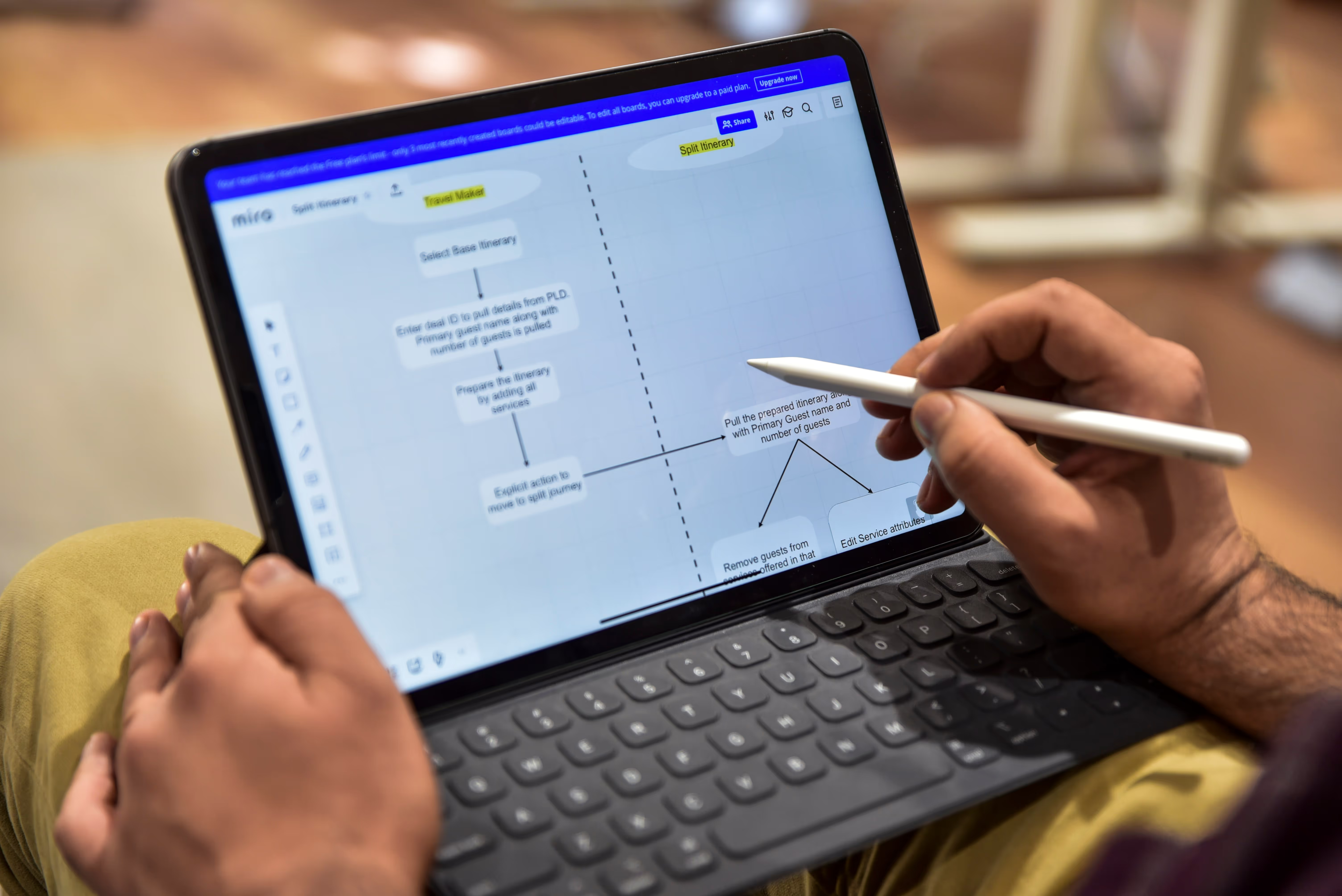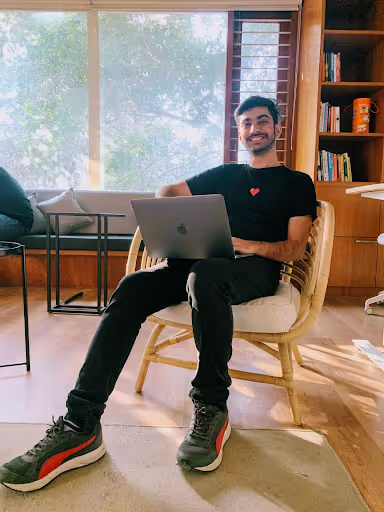Top 10 B2B Web Design Services (2026)
Explore leading B2B web design services that create professional websites tailored for business‑to‑business audiences and conversions.

You can spot a thoughtful product team by how their website feels. In my work with early‑stage AI and SaaS teams, we’ve seen that first impressions carry surprising weight — a poor site design can sink trust before a prospect even reads the copy. One study from CXL notes that 94% of people’s first impressions of a company come down to design.
Visitors assess colour schemes, layouts and tiny details within seconds. They equate polished, intuitive design with credibility and professionalism. These facts underline why design is not an aesthetic add‑on; it’s your best sales rep. This is especially true in B2B sales, where buying committees now involve 6-10 stakeholders who scrutinize every interaction. A B2B site must build trust and clearly explain value.
This guide assists founders and product leaders in choosing a B2B web design partner. It provides advice based on industry, budget, and company stage, helping you make an informed decision for your startup. Throughout I’ll reference recent studies and lessons from our work at ParallelHQ, but the focus is on helping you make informed decisions, not selling our services.
What makes a great B2B web design service?
Core capabilities to look for
When you evaluate B2B web design services, think beyond visuals. A good partner should cover the following capabilities:
- Business website development: a solid technical foundation matters. Your website should load quickly, scale with traffic and withstand security threats. Ask whether the agency uses performance budgets, caching strategies and accessibility audits.
- Corporate web design: B2B interfaces need clarity and cohesion. Look for teams that build design systems — component libraries, typography scales and colour guidelines — so your marketing site, blog and product dashboards feel unified.
- Professional web layout: users should be guided through an intentional journey. Great partners obsess over information hierarchy, messaging order and micro‑interactions that encourage conversion.
- Enterprise website solutions: integration is non‑negotiable. Does the service have experience connecting content management systems (CMS), customer relationship management (CRM) platforms and APIs? This ensures leads flow seamlessly into your sales funnel.
- B2B digital branding: trust comes from more than logos and colour palettes. The best teams align visual identity with messaging and value propositions. They know when to be conservative (financial services) and when to be bold (AI start‑ups).
- Industry‑specific web development: sectors like manufacturing, SaaS and fintech have unique regulatory and usability requirements. Consider agencies that have built for your sector before.
- Corporate portal design: dashboards, onboarding flows and account management tools require product thinking. Make sure the agency understands user roles, permissions and data visualisation.

Why B2B design needs are unique
Unlike consumer products, which are frequently impulse buys, B2B transactions are never impulsive. Our clients’ prospects often research for months before engaging sales. They might show your site to engineers, compliance officers and the finance team. These longer cycles demand content depth and clarity. A handful of statistics illustrate this complexity:
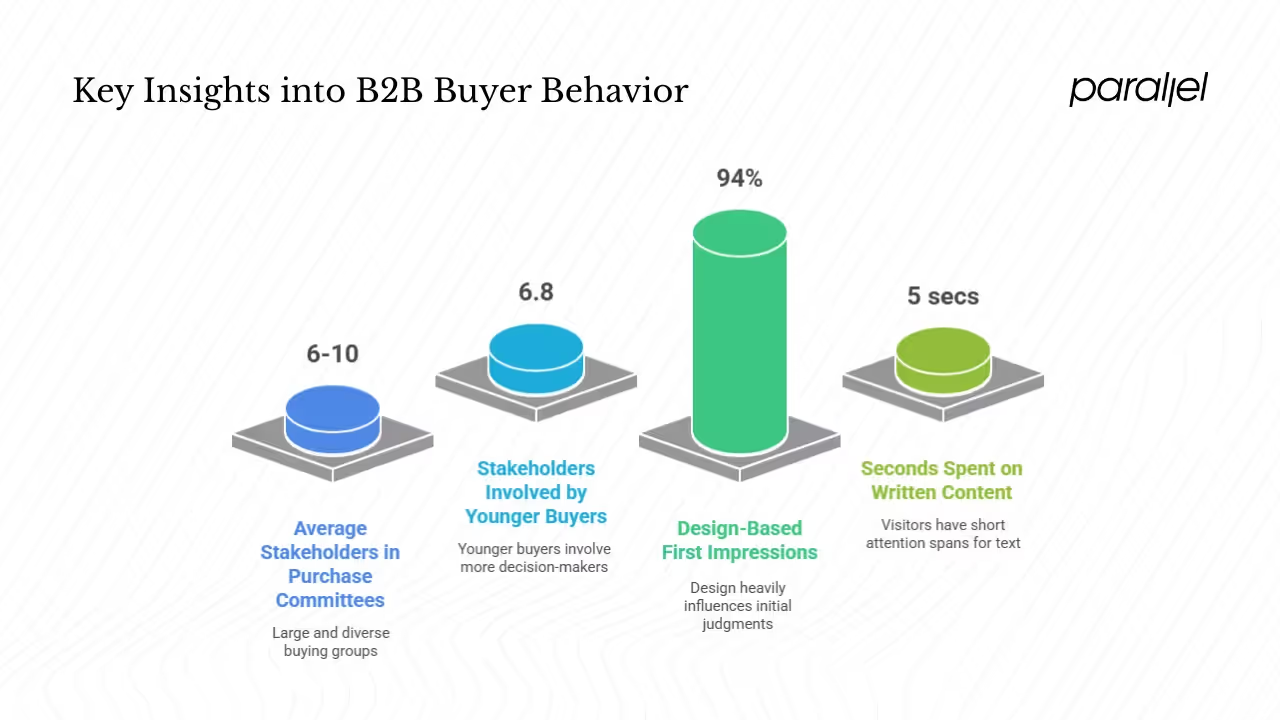
To serve these conditions, the right B2B web design services will balance information richness with persuasion. They will integrate analytics, CRM and marketing automation so your team can measure and refine conversion flows. And they design for mobile, as more decision‑makers review proposals on their phones.
Top 10 B2B web design services
Below is a list of standout agencies and studios that we admire. The rankings are based on their track record, specialisation and relevance to start‑ups. I am not endorsing them outright; instead, I want to highlight what each does well so you can match them to your goals.
1. Parallel — best for design‑forward start‑ups
As the studio where I lead design, Parallel aligns user interface, user experience and brand strategy into a coherent system. We focus on fast‑growing AI and SaaS companies who need websites, marketing assets and dashboards to look like one product. Our strength is in creating scalable design systems that extend from landing pages to onboarding flows.
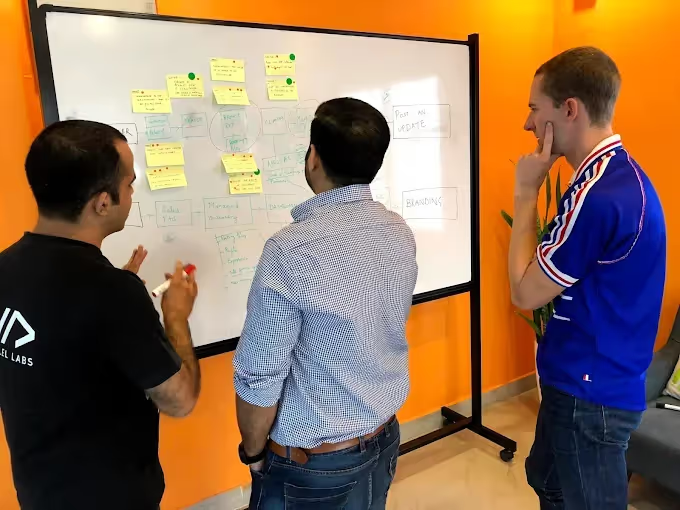
For example, we helped an enterprise AI startup reduce onboarding friction and improve sign‑up conversions by standardising components and refining messaging. We also provide digital branding and can collaborate with your internal developers or deliver full‑stack builds.
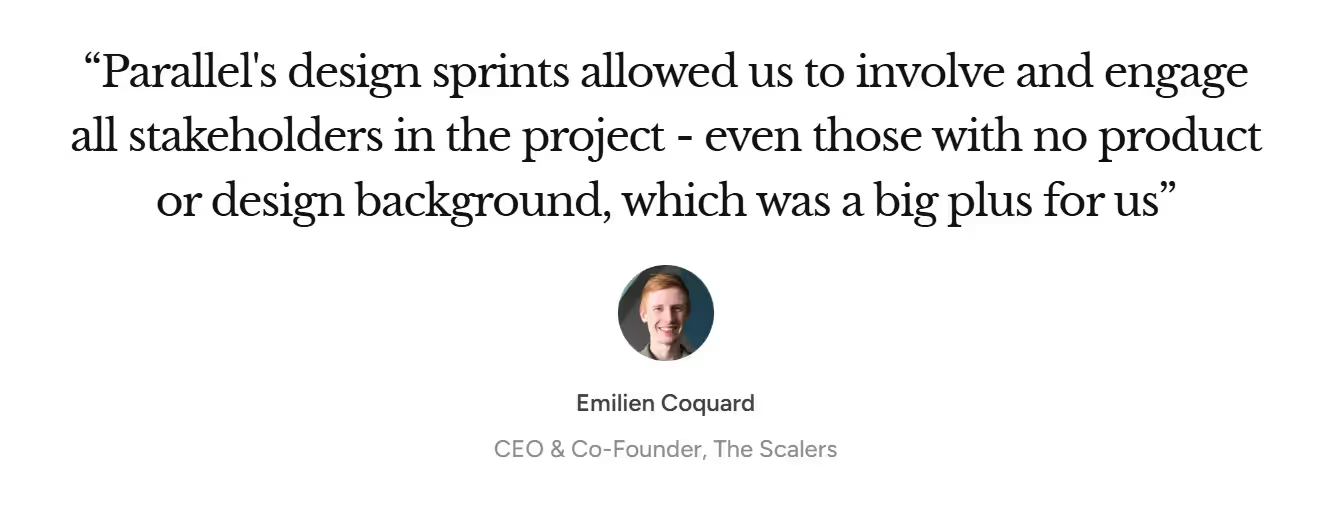
If you’re an early‑stage founder looking to clarify your brand and accelerate product adoption, this is where we excel.
2. Superside — best for scale and speed
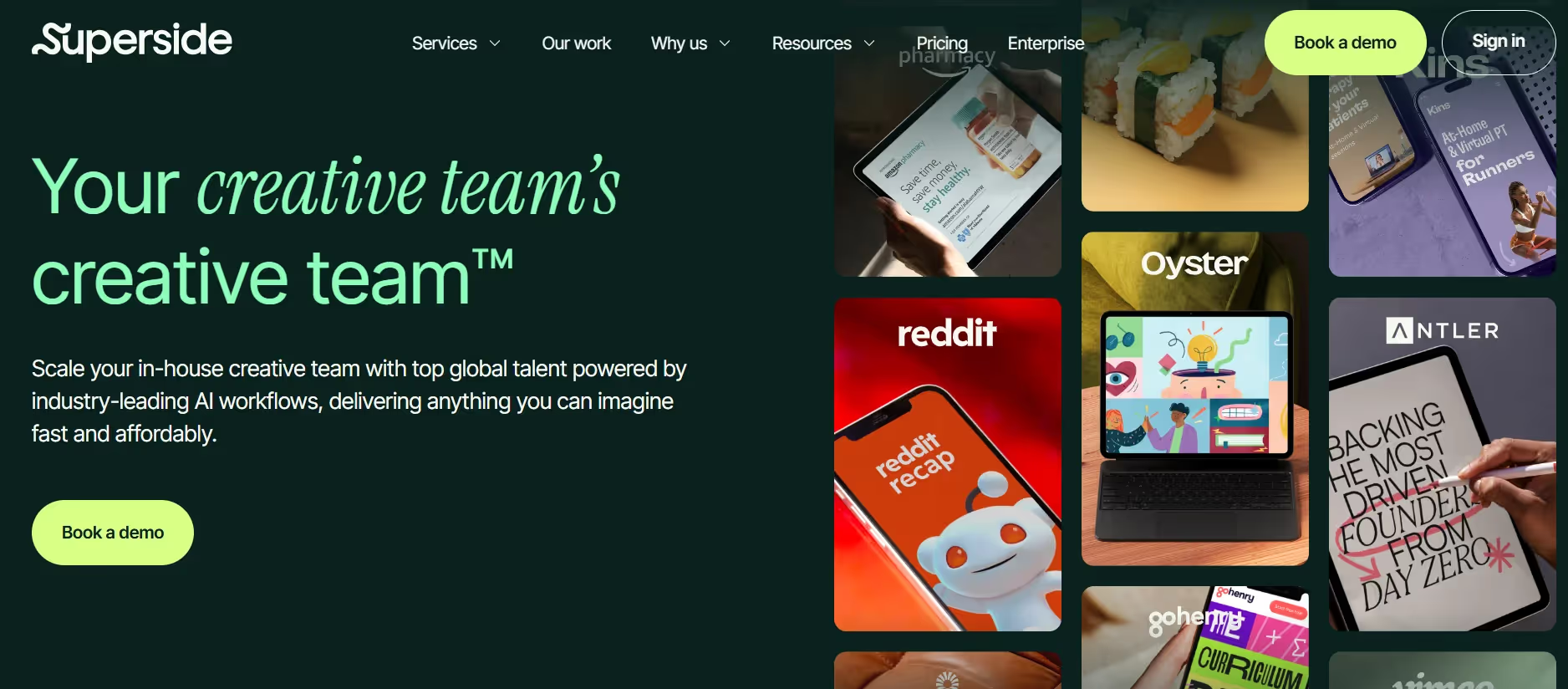
Superside offers an on‑demand creative team model. Instead of a fixed agency, you get access to designers, developers and strategists who work as an extension of your team. They’re well‑suited to larger B2B SaaS companies that need continuous design output — landing pages, UX improvements, conversion rate optimization (CRO) tests and content strategy. Superside’s subscription model allows you to scale design capacity up or down without hiring full‑time staff. However, because they operate across many industries, you’ll need to provide clear briefs and guardrails to maintain brand cohesion.
3. Designity — best for creative flexibility
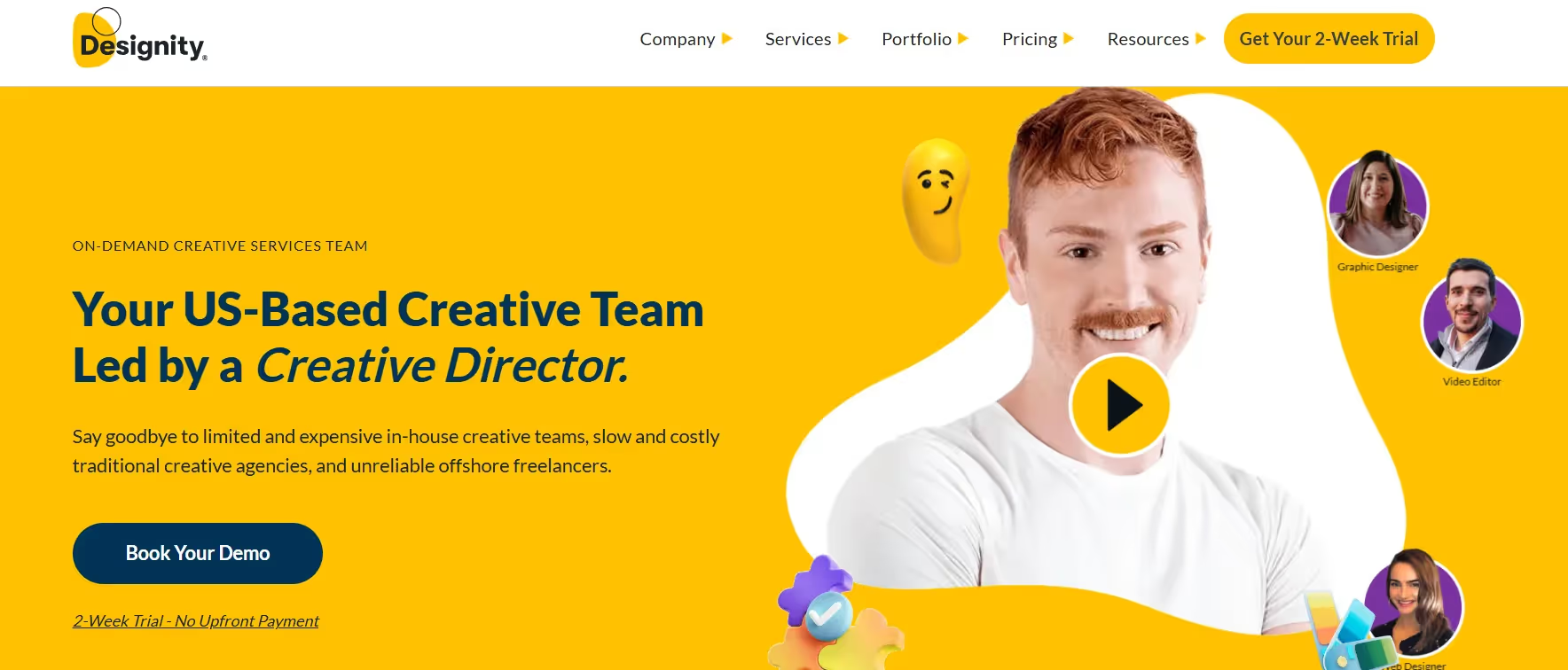
Designity is a US‑based creative service that pairs businesses with vetted designers across disciplines. Their network covers web design, motion graphics, UX and illustration. This breadth makes them attractive to start‑ups needing branding, marketing sites and product UI in one place. Clients appreciate their ability to blend visual storytelling with commercial strategy — think animated explainers for complex SaaS products or interactive infographics. Keep in mind that the distributed nature of the network means project management is crucial. Designity works well if you value flexibility and are willing to coordinate with multiple specialists.
4. Clay — best for high‑end enterprise design
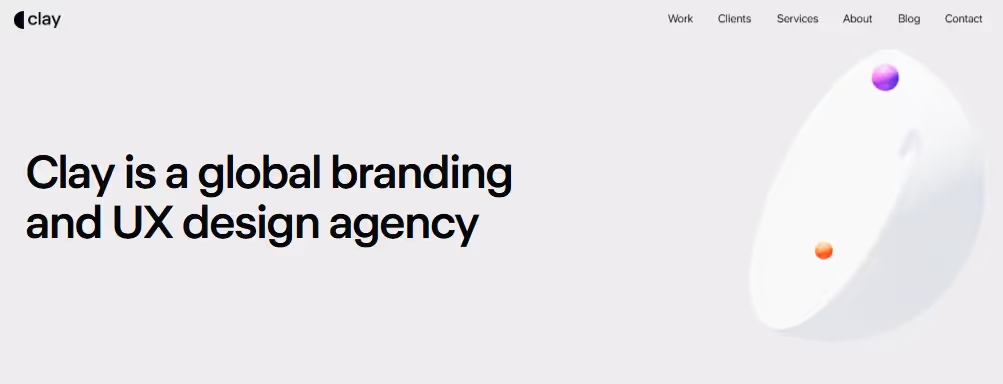
Silicon Valley agency Clay builds elegant, minimal websites with robust back‑ends. They specialise in enterprise SaaS, fintech and platform design. Their work stands out for crisp typography, generous white space and subtle motion — qualities that convey trust and sophistication. Clay often integrates custom CMS and CRM solutions, which can make their projects more expensive. They’re a good fit for funded companies that view their website as a strategic asset and want a partner capable of building custom dashboards, secure portals and interactive product tours.
5. SmartSites — best for SEO‑optimised builds
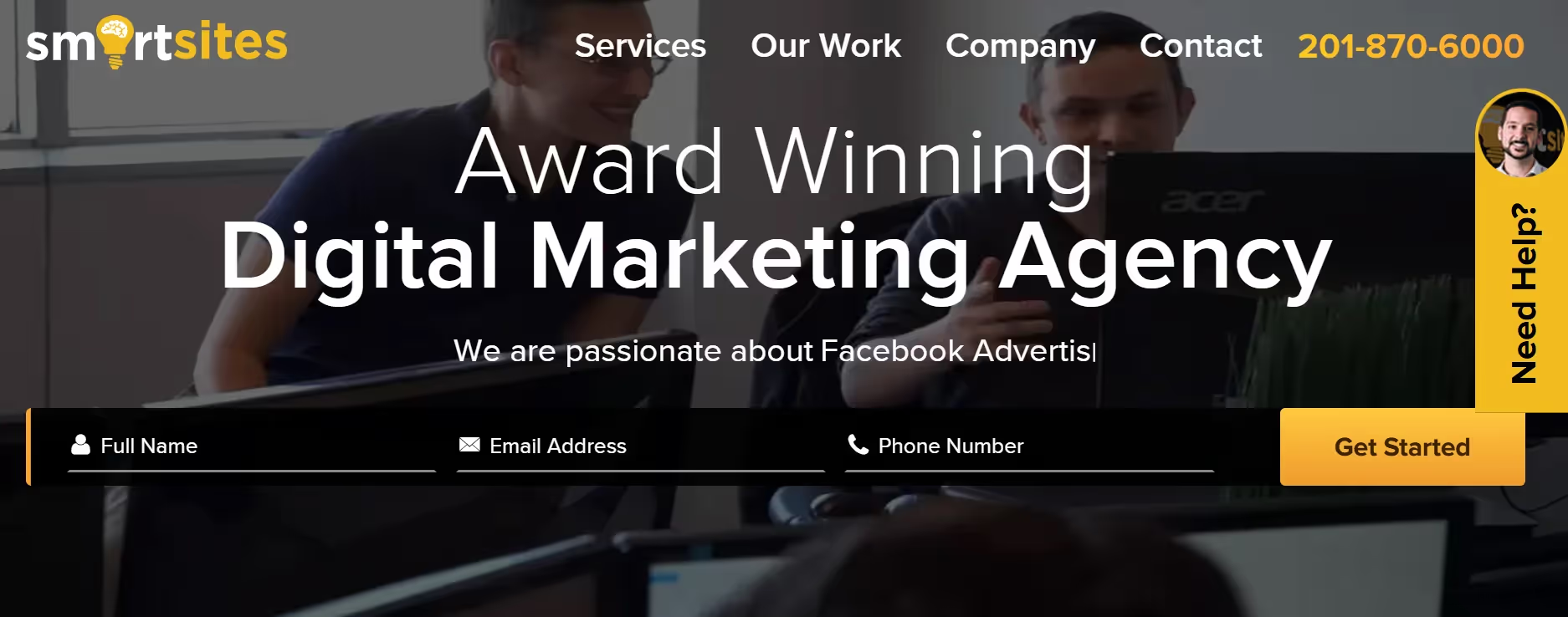
SmartSites is a full‑service digital agency known for combining development and search‑engine optimization. They create lead‑generation websites that rank well for competitive keywords. Their team handles technical SEO (site structure, schema markup), content strategy and performance marketing. SmartSites suits B2B companies in saturated markets where inbound leads are critical. The trade‑off is that their design style can feel more templated; if brand differentiation is paramount, you may need to push for customisation.
6. BOP Design — best for traditional industries
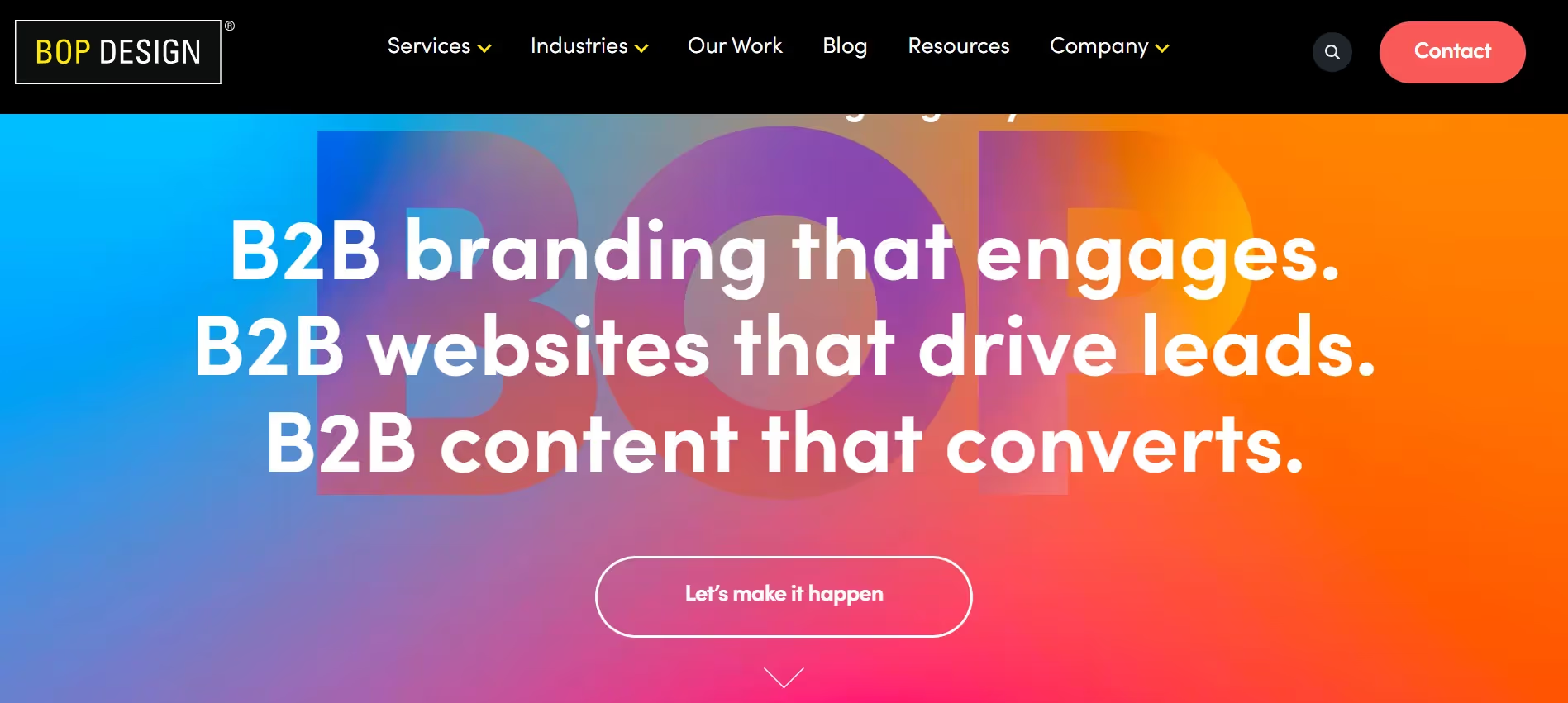
BOP Design focuses on B2B markets like manufacturing, logistics and professional services. Their sites are content‑rich, emphasising trust signals such as certifications, case studies and white papers. Because industrial buyers value relationships and expertise, BOP Design’s work leans conservative and clear. They also offer branding and content development services, making them a one‑stop shop for businesses that need to educate as well as convert. If your offering is high‑value and technical, and your buyers are risk‑averse, BOP may be ideal.
7. Orbit Media Studios — best for content‑rich websites
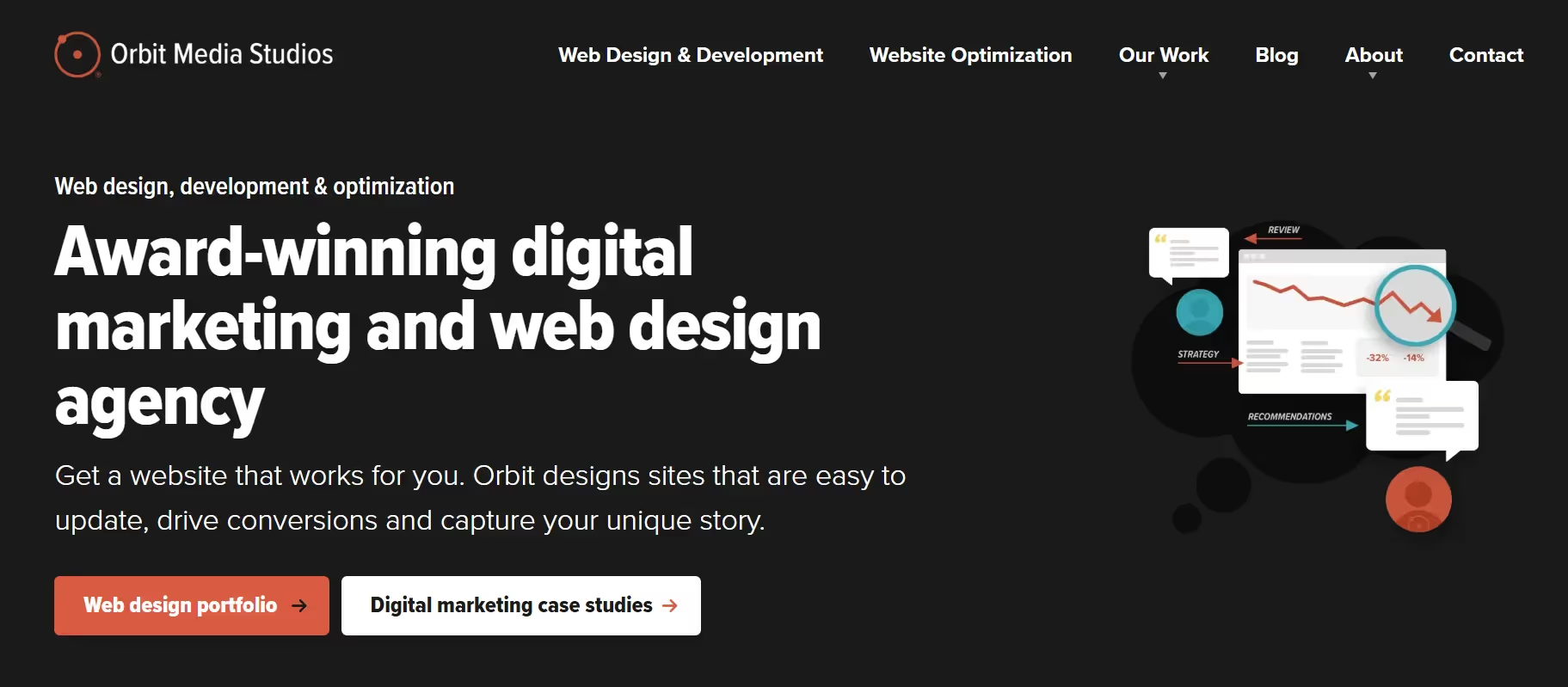
Orbit Media is renowned for strong content strategy and intuitive navigation. They build websites that help companies publish thought leadership and convert readers into leads. Their expertise in WordPress and analytics helps clients manage large content libraries and measure what resonates. Orbit is a good fit for B2B businesses that rely on SEO, blogging and webinars to generate demand. If you have complex site architecture — for example, lots of guides, case studies and product pages — they can design a structure that keeps users engaged.
8. UPQODE — best for WordPress‑based solutions
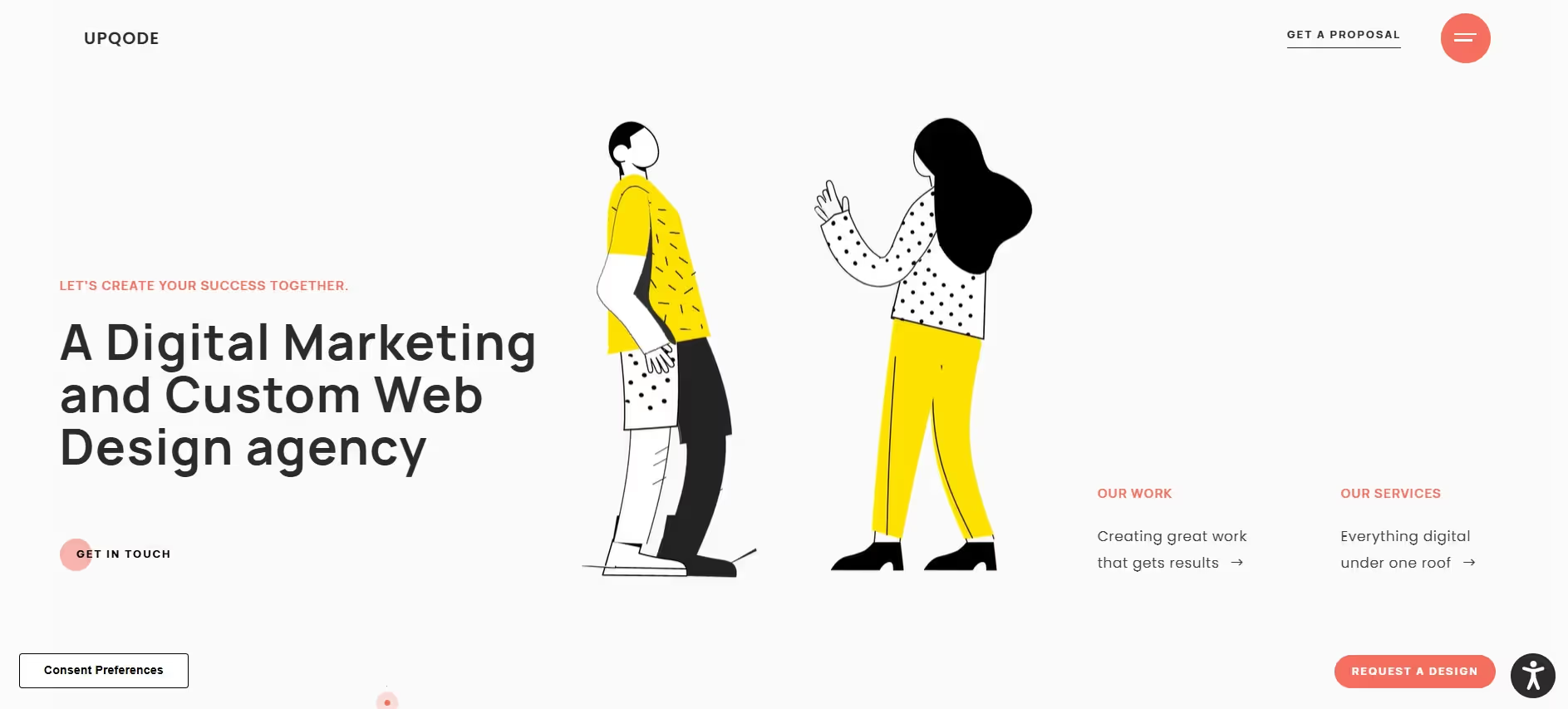
UPQODE delivers high‑performing websites built primarily on WordPress. They emphasise performance optimisation, custom themes and interactive UI design. This makes them popular with venture‑backed start‑ups who need a polished site quickly but may replatform later. While they can integrate e‑commerce and membership features, their core strength lies in launching marketing sites that look bespoke. UPQODE is worth considering if you need to go live fast and value the flexibility of WordPress.
9. EIGHT25MEDIA — best for complex products

EIGHT25MEDIA specialises in tech and SaaS companies with intricate offerings. They excel at translating complex value propositions into simple narratives. Their process often starts with workshops to map user flows and identify decision points. From there they build conversion‑driven architectures, using animation and interactive storytelling to guide visitors. They also handle back‑end development, making them suitable for start‑ups that need both marketing and product interfaces redesigned. Because they invest heavily in strategy, expect longer timelines and higher budgets.
10. WebEnertia (ClearDigital) — best for large‑scale enterprise sites
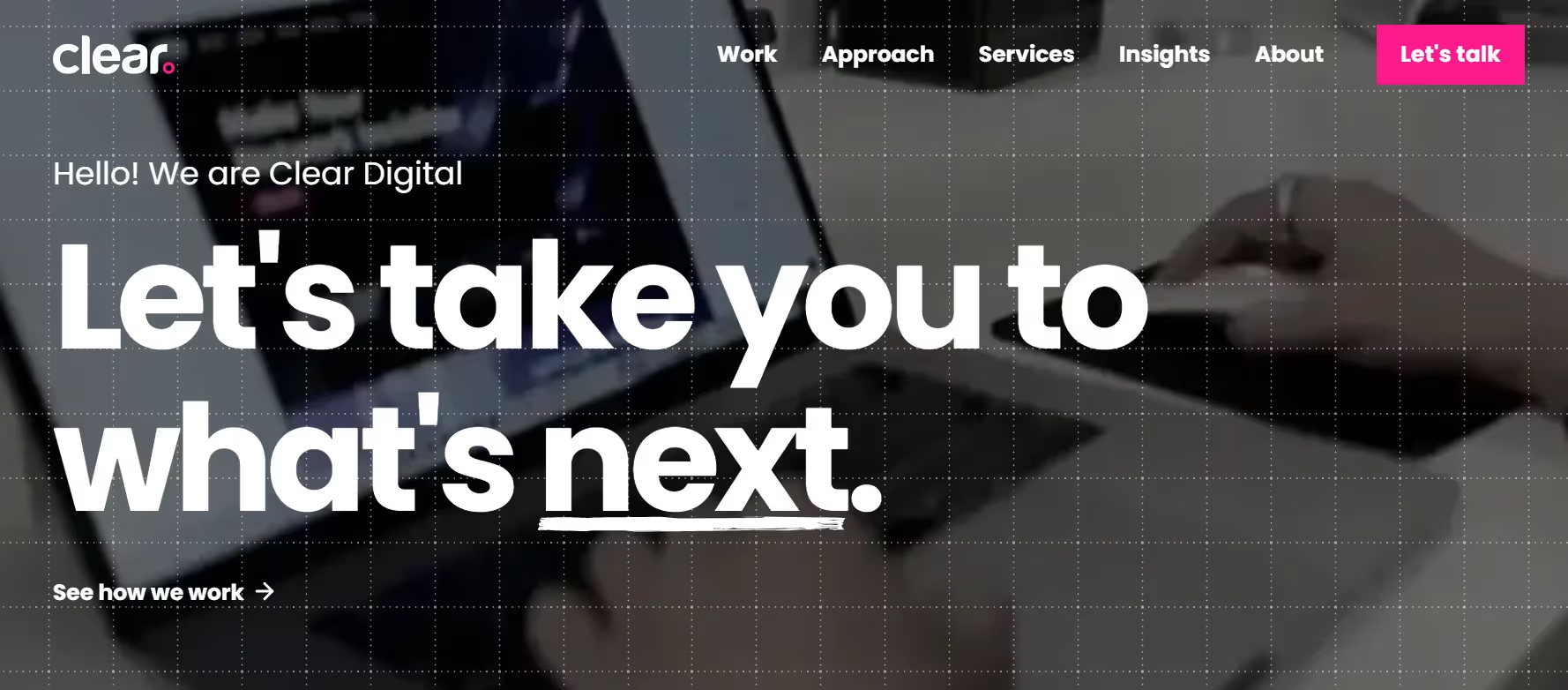
WebEnertia (ClearDigital), another Silicon Valley agency, focuses on secure, scalable web platforms for enterprises. They’re adept at managing multi‑site setups, custom content management and data security. Their design aesthetic balances modern visuals with the gravitas required by corporate IT and finance teams. If your organisation must comply with rigorous security standards, integrate with legacy systems or support multiple languages and regions, WebEnertia is worth a look.
How to choose the right B2B web design partner
Choosing among B2B web design services isn’t just about liking their portfolio. It’s about finding a partner whose process and strengths align with your current needs. Here’s how I recommend thinking about it.
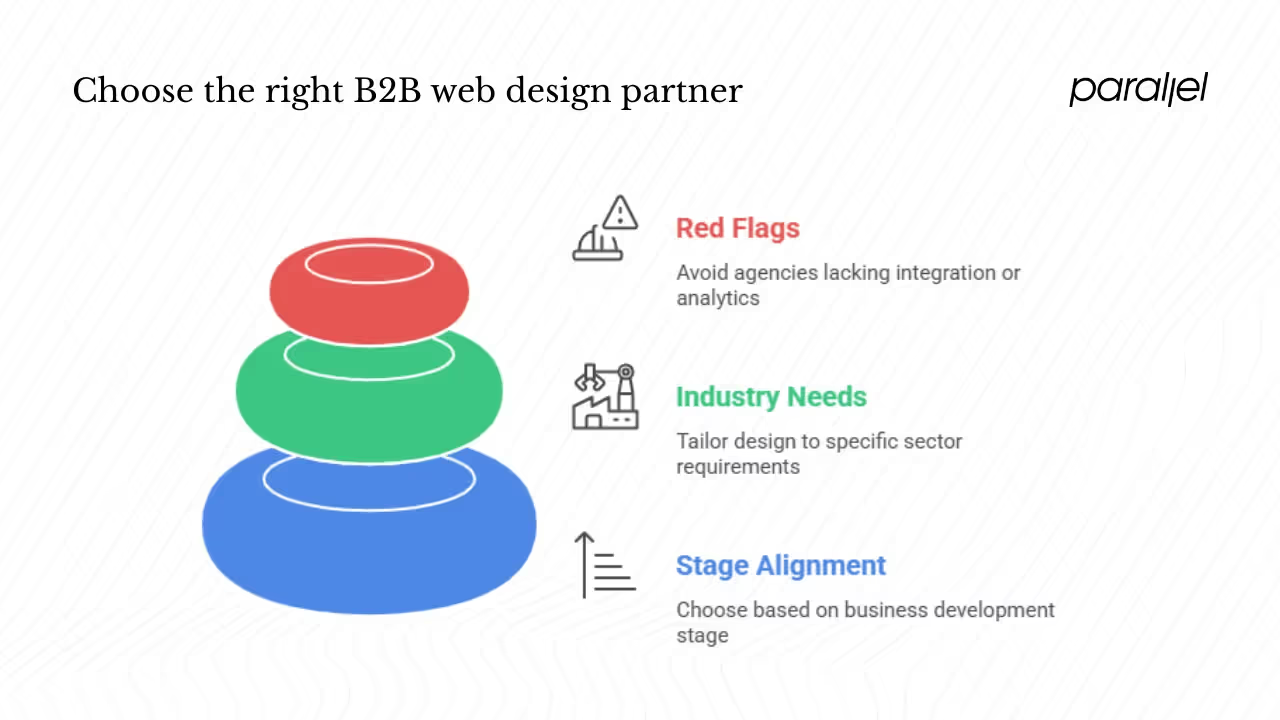
Choose based on your stage
- Pre‑launch: When you’re validating a product idea, clarity and credibility are paramount. Prioritise a partner who can distil your value proposition into a simple landing page. Focus on branding, messaging and capturing leads. Resisting the urge to overbuild — a beautiful single page with a clear call‑to‑action is often enough.
- Post‑MVP: Once you have a product and early users, your website should reduce friction and deepen engagement. Look for teams skilled in CRO and onboarding design. They should be comfortable analysing analytics to identify drop‑off points and revising copy or layout accordingly.
- Scale‑up: As you expand, you’ll need a robust CMS, analytics dashboards and possibly multilingual support. Partners like WebEnertia or Clay can integrate custom dashboards and CRMs. This stage often requires design systems so that marketing and product teams can move quickly without reinventing patterns.
Choose based on industry needs
- SaaS: Pricing pages, product marketing and clear feature explanations are critical. Design partners should understand user onboarding flows and subscription management. They should also support A/B testing and CRO.
- Fintech: Trust and compliance come first. Look for agencies experienced in designing for regulation, data security and accessibility. Mobile‑first design is crucial because many finance professionals use mobile apps to check accounts and approve transactions.
- Manufacturing and logistics: Buyers in these sectors need technical specifications, case studies and request‑for‑quote flows. A good partner will balance detailed information with succinct calls‑to‑action and integrate CRM tools to handle inquiries.
Red flags to watch out for
- Overemphasis on visuals: A beautiful site that ignores user journeys, loading times or accessibility will harm conversions. Ask prospective agencies about their process for user research and usability testing.
- No clarity on CRO or analytics: If a partner can’t articulate how they measure success or iterate based on data, be cautious. Effective B2B web design services embed analytics and collaborate with growth teams.
- Lack of integration experience: B2B sites rarely exist in isolation. They need to connect to marketing automation, CRM and sometimes product APIs. Ensure your partner has experience integrating these systems and can explain their approach.
Final thoughts
Your website is not a digital brochure; it’s a dynamic tool that educates, persuades and converts. Research like Hostinger’s first‑impressions study reminds us that visitors make snap judgements, while WebFX’s analysis of 2,000 businesses shows that web design investments range widely — from $1,000 to $100,000. Those numbers might feel daunting, but the cost of a poor design is often higher. By partnering with a service that understands your business goals, industry requirements and growth stage, you set yourself up to build trust and accelerate sales.
In our experience at Parallel, start‑ups that invest early in strategic design — building systems, aligning brand and product, integrating analytics — grow faster than those who treat design as a visual afterthought. My hope is that this guide helps you cut through the noise, identify the right B2B web design services for your needs, and approach the process with confidence.
Feel free to reach out if you have questions or want to compare notes; I’m always curious to hear how other founders and design leaders are navigating the complex, multi‑stakeholder world of B2B products. No matter which B2B web design services you end up partnering with, ensure they align design decisions with business strategy and support your growth journey.
Frequently asked questions
1. How much does a B2B website cost?
Web design and development costs vary widely. A survey of more than 2,000 businesses by WebFX found that professional web design costs between $1,000 and $100,000, while routine maintenance ranges from $3,600 to $50,000 per year. Basic brochure sites fall at the lower end; custom CMS, integrations and dashboards push costs up.
2. What is a B2B website service?
It’s a package of strategy, design and development tailored to businesses that sell to other businesses. Services often include brand positioning, user research, information architecture, visual design, development and integration with marketing and sales platforms.
3. What is B2B website design?
B2B design accommodates longer buying cycles, multiple decision‑makers and complex value propositions. It emphasises clear messaging, trust signals and usability. Research indicates that people form judgments within seconds, so B2B designers need to deliver clarity fast.
4. How much do website design services cost annually?
WebFX’s data shows that annual website design services typically cost $501 to $5,000, while maintenance services range from $1000 to $5,500. Freelancers often charge $2k–$10k for small sites; agencies can range from $20k to more than $100k depending on complexity.


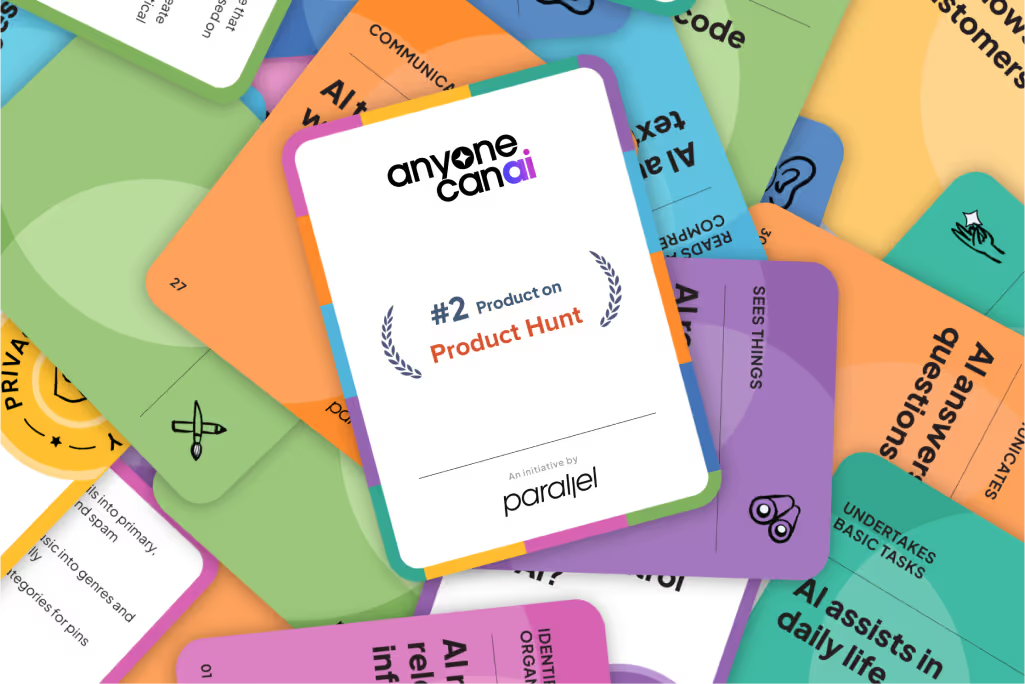
.avif)


